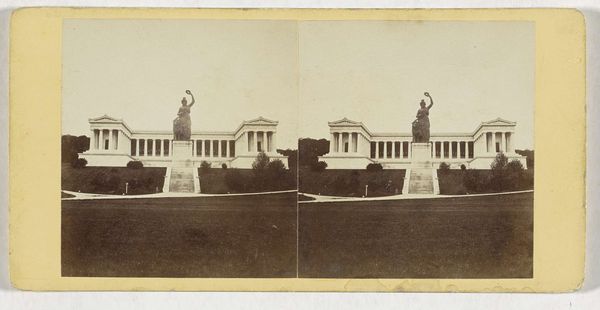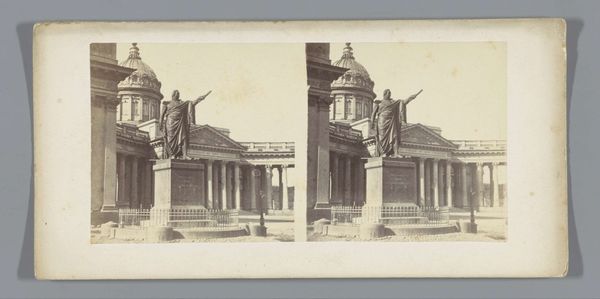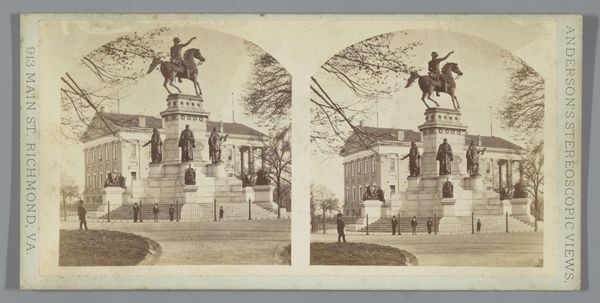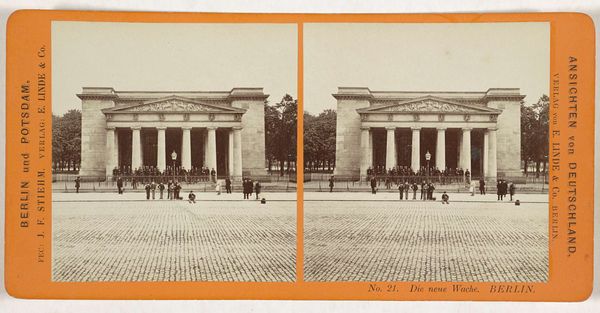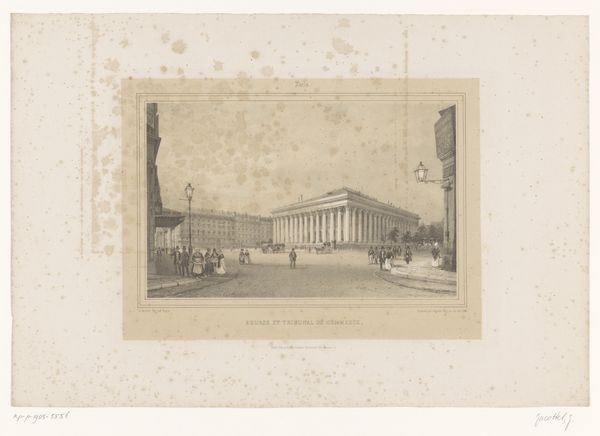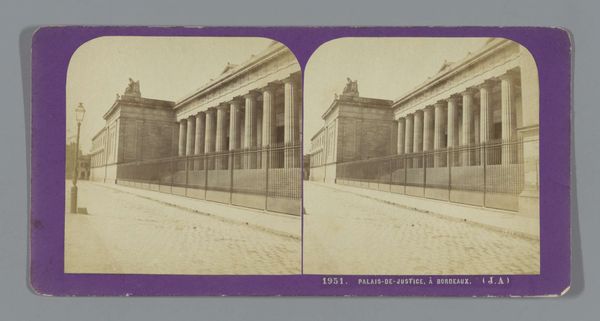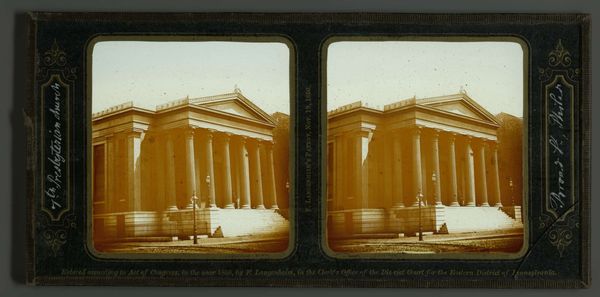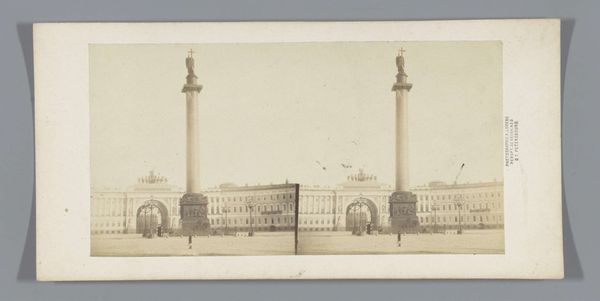
Ruhmeshalle in München, op de voorgrond het standbeeld van Bavaria 1860 - 1890
0:00
0:00
Dimensions: height 85 mm, width 170 mm
Copyright: Rijks Museum: Open Domain
Editor: This is a photograph from between 1860 and 1890 by Ferrier Père-Fils et Soulier, depicting the Ruhmeshalle in Munich with the statue of Bavaria in the foreground. I'm struck by the way the photograph duplicates the scene, almost like a mirror image, drawing attention to the architecture and sculpture. What stands out to you in this piece? Curator: For me, this photograph presents a fascinating look at the industrial processes involved in image-making and monumentality. It isn’t just about the Ruhmeshalle; it’s about how that Hall and the Bavarian statue were consumed and reproduced. Think about the social context: the rise of photography as a mass medium, the construction of national identity, and the industries that spring up around that. Editor: That's interesting; I was just looking at the symmetry and the classical elements of the architecture. Curator: But consider the materiality of the image itself. It's a print, reproducible, meant to circulate. And what about the labor involved in quarrying the stone for the Hall, casting the bronze for the statue? Who were these workers, and what were their conditions? This photograph is not simply a neutral representation; it's a product of specific economic and social forces. How do you think its distribution might affect the reception of the site? Editor: So, you’re saying that the value lies not only in the image, but also in understanding the processes that created the image and the subject within it? Curator: Exactly! We should question whose stories are privileged by the grand monument and explore the hidden narratives behind its making. Consider, also, the colonial implications. Where did Bavaria source the materials? And who were the audiences of such monuments? Editor: That definitely gives me a lot to think about – looking beyond the surface and thinking about the deeper connections to labor and consumption. I'll definitely look at art differently now. Curator: And that's the aim, isn’t it? To see how intertwined art is with all aspects of society.
Comments
No comments
Be the first to comment and join the conversation on the ultimate creative platform.

